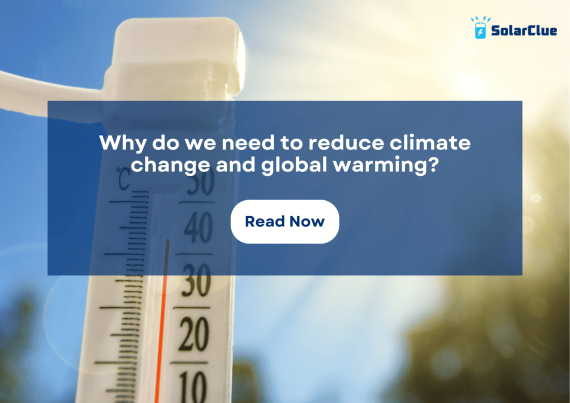Install Heat Pumps: Reduce Global Warming and Climate Change
Climate change and global warming are serious environmental issues that India is facing today. As individuals, we must take steps to reduce our carbon footprint. For that we must adopt sustainable appliances like heat pumps. These devices not only save costs but also benefit the environment.
In this blog, we will discuss in detail about global warming, climate change and how heat pumps can help reduce these severe environmental issues. Let’s get started!
Table of Contents
- 1 Climate Change Meaning
- 2 Global Warming Meaning
- 3 What is a heat pump?
Climate Change Meaning
Climate change refers to long-term shifts in global or regional climate patterns due to natural and human-induced factors. It encompasses changes in temperature, precipitation, wind patterns, and other meteorological variables over an extended period.
Global Warming Meaning
Global warming is a specific aspect of climate change that refers to the gradual increase in the Earth’s overall temperature due to the greenhouse effect caused by increased levels of carbon dioxide and other greenhouse gases in the atmosphere.
What are the causes of global warming and climate change?
Now that you know the meaning of climate change and global warming, let’s understand what causes them. Listed below are a few causes of climate change and global warming:
1. Generating Power
Burning fossil fuels like coal, oil, and natural gas to produce electricity releases large amounts of carbon dioxide and other greenhouse gases into the atmosphere. These gases trap heat, contributing significantly to global warming.
2. Manufacturing Goods
Various industrial processes involved in manufacturing products, such as cement production, chemical processing, and metal smelting, emit greenhouse gases. These emissions accumulate in the atmosphere, exacerbating climate change.
3. Cutting Down Forests
Deforestation, or the clearing of forests, reduces the number of trees that can absorb carbon dioxide from the atmosphere. Fewer trees mean more carbon dioxide remains in the air, intensifying the greenhouse effect.
4. Using Transportation
The burning of gasoline and diesel fuels in vehicles like cars, trucks, and planes releases carbon dioxide and other pollutants into the air. Transportation is a major contributor to greenhouse gas emissions worldwide.
5. Producing Food
Agricultural practices, such as livestock farming and rice cultivation, generate methane and nitrous oxide – potent greenhouse gases. Additionally, the use of fertilizers and machinery in agriculture contributes to carbon dioxide emissions.
Why do we need to reduce climate change and global warming?

The consequences of climate change and the consequences of global warming are not good for the environment. It is important that we protect out planet for a better future for ourselves and the generations to come. Some of the reasons to reduce these severe environmental issues are listed below:
1. Rising sea levels
Sea levels around India are rising rapidly. This is due to melting glaciers and ice caps. Coastal cities like Mumbai and Chennai are at grave risk. Rising seas could submerge large areas of these cities. Millions of people may have to relocate from their homes. Coastal flooding could damage infrastructure and disrupt economic activities.
2. Extreme weather events
India is experiencing more frequent and intense heatwaves, droughts, and floods. Heatwaves are claiming many lives each year. People are suffering from heat strokes and dehydration. Droughts are causing crop failures and water scarcity. This is impacting agriculture and food production. Floods are destroying homes, roads, and bridges. They are displacing thousands of people and causing economic losses.
3. Loss of biodiversity
India is a biodiversity hotspot with many unique species. But climate change is disrupting their natural habitats. Rising temperatures and changing weather patterns are making survival difficult. Many species are struggling to adapt. Some may go extinct due to climate change. The loss of biodiversity could have far-reaching consequences for India’s ecosystems.
4. Health risks
Climate change is posing serious health risks in India. Heatwaves are leading to heat strokes and other heat-related illnesses. Mosquito-borne diseases like malaria and dengue are spreading to new regions. Air pollution from wildfires is causing respiratory problems. Extreme weather events are resulting in injuries and loss of life.
5. Food and water scarcity
Climate change is impacting India’s agriculture and water resources. Droughts are causing crop failures and reducing food production. This could lead to food shortages and malnutrition. Rising temperatures and erratic rainfall are straining water supplies. Many parts of India may face water scarcity in the coming years.
Now that you know the severe consequences of climate change and global warming, it is important that we reduce it. One of the main causes is the greenhouse gas emissions, that is because of the burning of fossil fuels. The high burning of fossil fuels is because of the high level of electricity consumption.
We must all reduce electricity consumption is by adopting energy-efficient appliances. One such appliance is a heat pump. It is a water heating devices, which consumes 75% less electricity than other water heaters, like a geyser.
Let’s understand more about heat pumps, and how it works so efficiently, while consuming significantly less electricity.
What is a heat pump?
A heat pump is a water heating device, to meet your daily hot water needs. It is energy-efficient, as it uses less electricity than other traditional water heaters. The difference lies in the working principle. Any traditional water heater, like a geyser, uses direct electricity to heat water. Whereas, a heat pump uses electricity to only transfer heat from one place to another. This heat is used to produce hot water, rather than electricity.
How a heat pump water heater works?

A heat pump works on the principle of transferring heat from one place to another.
This system consists of two main components: an indoor unit and an outdoor unit.
The outdoor unit has two parts – an exhaust fan and a compressor. The indoor unit is the storage tank, where water is stored.
The exhaust fan absorbs heat from the surrounding air, while the compressor compresses the refrigerant gas, increasing its temperature. This heated refrigerant gas then passes through a spiral condenser inside the indoor unit, transferring its heat to the water stored in the tank. This process continues until the desired water temperature is reached.
Unlike traditional geysers that use a significant amount of electricity to generate heat, heat pumps consume less energy by simply moving heat from one place to another. This makes them more energy-efficient and cost-effective in the long run.
Does heat pumps help reduce global warming and climate change?
Yes, heat pumps help reduce global warming and climate change. By adopting heat pumps, Indian households and businesses can play a vital role in mitigating climate change. These appliances are highly efficient and consume up to 75% less electricity than traditional water heaters, which means they produce fewer greenhouse gas emissions.
Additionally, heat pumps are considered 90% renewable because they absorb heat from the surrounding air, rather than relying solely on electricity generated from non-renewable sources. This makes them a more sustainable and eco-friendly option for water heating.
So heat pumps are one of the best global warming solutions.
What are the benefits of heat pumps?
Heat Pumps offer various benefits. They are not just good for the environment, but also other benefits. Listed below are the benefits of heat pump systems:
1. Cost-Effective
Heat pumps have high upfront cost. However, they make up for it through lower operating costs. Heat pumps transfer heat rather than generating it directly. This uses far less electricity – up to 75% less. Over its 10-15 year lifespan, a heat pump can save you hundreds or even thousands in energy costs. So it is actually a cheaper alternative to other traditional water heaters like geysers.
2. Long Lifespan
With proper maintenance, heat pumps last 15 years or more – significantly longer than standard electric geysers (8-10 years). So there is no need for replacement for a long time. This extended life cycle also contributes to it being a cost-effective option.
3. Reduced Water Wastage
Traditional water heaters constantly heat and reheat the same water, leading to significant energy losses. Heat pumps heat water more efficiently, so you don’t have to run the tap as long waiting for hot water. This conserves water, especially in households with long pipe runs.
4. Positive Environmental Impact
By consuming significantly less electricity than conventional water heaters, heat pump water heaters have a lower carbon footprint and contribute to reducing greenhouse gas emissions. This positive environmental impact is achieved by relying on renewable energy sources (ambient air) and minimizing the use of fossil fuels for power generation. Additionally, the longer lifespan of these systems further reduces the environmental impact associated with manufacturing and disposing of water heaters.
5. Efficient in Cold Climates
One common misconception about heat pump water heaters is that they may not perform well in colder climates. However, modern heat pump water heaters are designed to be efficient even in low temperatures. They can effectively extract heat from the surrounding air, even when the temperature drops below freezing. This makes heat pump water heaters a viable and energy-efficient option for hot water needs in various climates, including colder regions.
6. Manual Temperature Setting
Most heat pumps allow you to change temperature as per your requirements. This ensures you have hot water when needed without wasting energy by overheating the water beyond your requirements.
7. Availability in Different Sizes
Heat Pumps normally have an indoor and an outdoor unit. But many homes in India, specially in big cities, may not have that space available. For that, a single-unit heat hump is designed. It is also called Integrated Heat Pump.
Conclusion
Installing heat pumps is a crucial step towards reducing global warming and climate change. These energy-efficient systems not only save costs in the long run but also contribute to a cleaner and more sustainable environment. It is now time for India to invest in heat pumps, for a sustainable future, for ourselves and the generations to come.
Visit SolarClue® to see the best heat pump water heaters. SolarClue® is an online marketplace where solar energy products are sold at discounts up to 50%.




